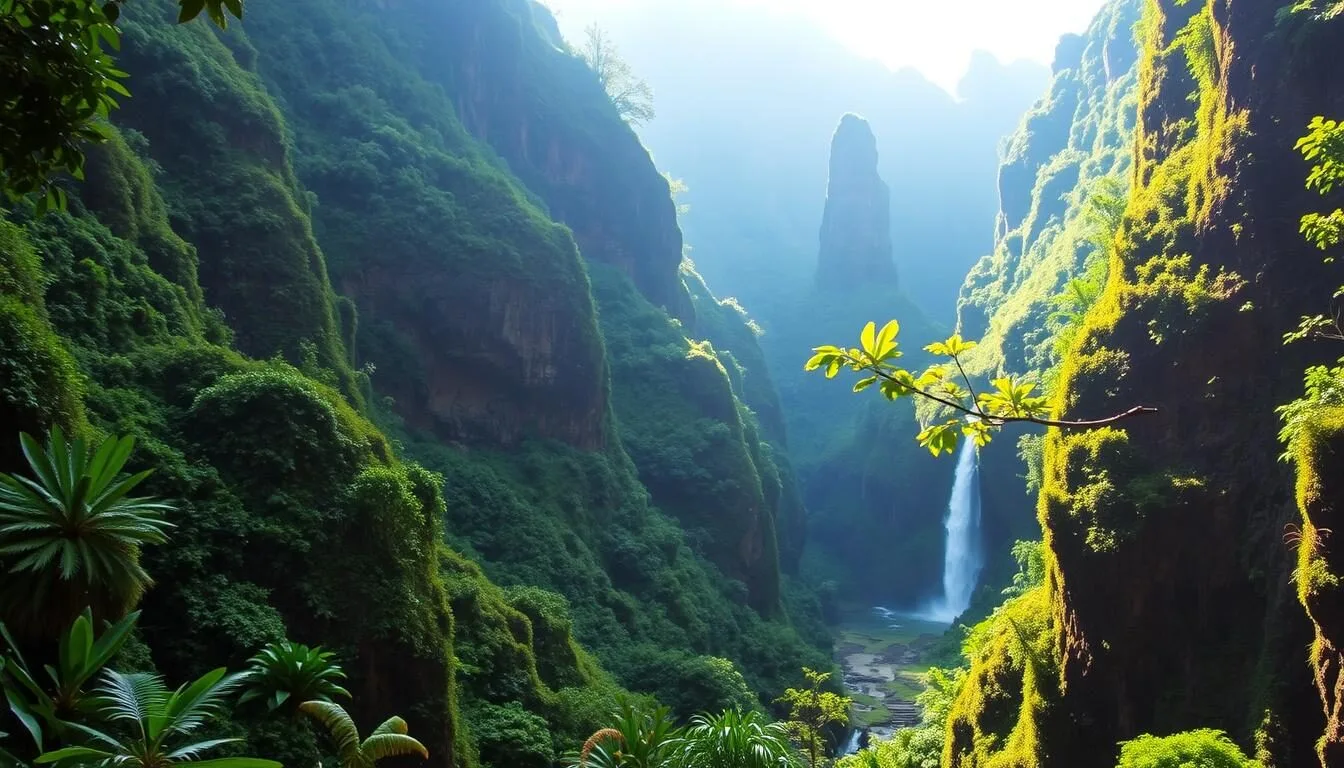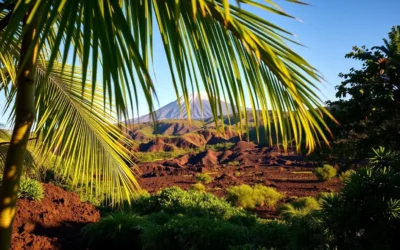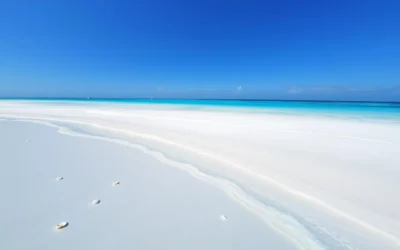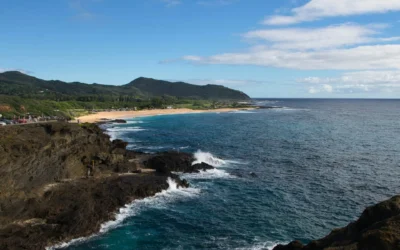✓ Accommodations ✓ Flights ✓ Rental Cars ✓ Tours & Activities
Imagine standing in a lush, verdant paradise surrounded by towering emerald peaks piercing the azure sky. Welcome to ʻIao Valley State Monument, one of Maui’s most breathtaking natural wonders and a site of profound cultural significance.
As you step into this 4,000-acre park nestled in Central Maui, you’re transported to a world of staggering natural grandeur. The valley’s unique ecosystem thrives in one of Hawaii’s wettest locations, creating a verdant paradise unlike anywhere else on the island.
This guide provides you with essential visitor information, including hours, fees, and practical tips to make your visit memorable. Whether you’re planning your first visit or returning to experience more of this sacred place, you’ll appreciate the natural beauty and cultural significance of ʻIao Valley.
Discovering Īao Valley State Monument
As you step into the Īao Valley State Monument, you’ll be surrounded by the lush greenery that characterizes this unique valley state. The valley’s name, ‘Īao, translates to “cloud supreme” in Hawaiian, perfectly describing the misty atmosphere that often envelops this magical place.
Location and Overview
The Īao Valley is located on the island of Maui, Hawaii, and is known for being the second wettest spot in Hawaii, averaging 386 inches of rainfall per year. This abundant rainfall contributes to the valley’s lush landscape and rich biodiversity.
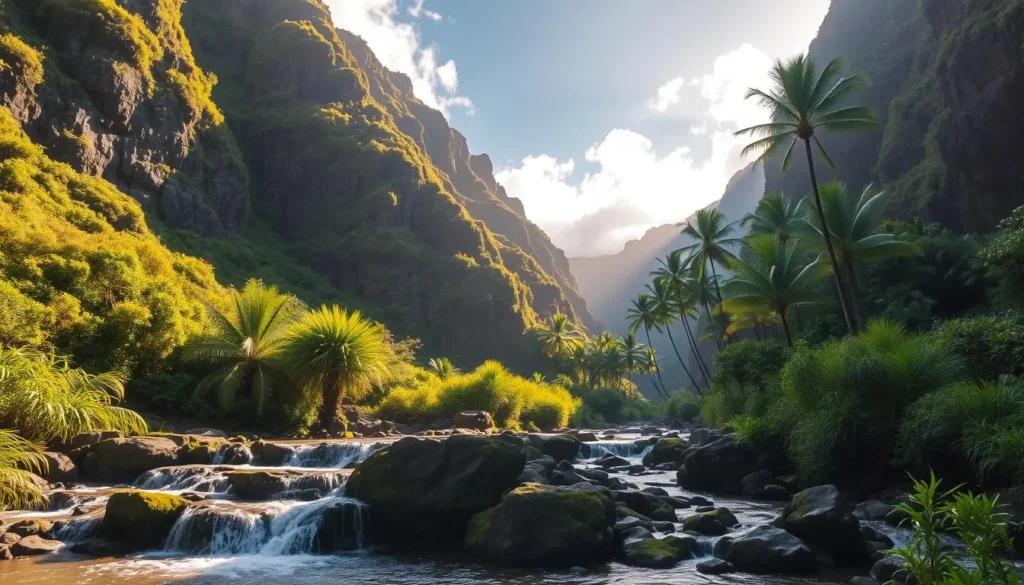
Natural Beauty and Significance
The natural beauty of Īao Valley goes beyond its aesthetics; it holds deep cultural and spiritual significance for Native Hawaiians. Some key aspects of the valley include:
- The lush greenery that characterizes Īao Valley, a result of being the second wettest location in Hawaii.
- The abundant water that has shaped both the landscape and the rich biodiversity throughout the valley.
- The unique microclimate that creates an almost mystical environment where nature flourishes.
The beauty and significance of Īao Valley make it a truly unforgettable destination.
The Iconic Īao Needle: Maui’s Natural Wonder
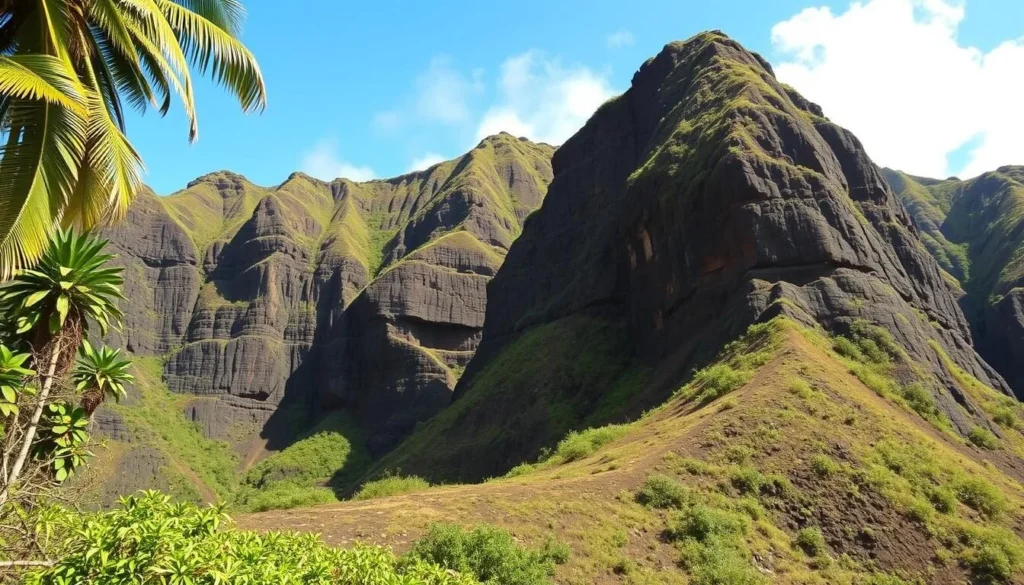
Rising dramatically from the valley floor, the Īao Needle is an unforgettable sight for visitors to Maui. This iconic landmark is not only a natural wonder but also holds deep cultural and spiritual significance.
Geological Formation and Height
The Īao Needle is a remarkable geological formation that stands over 2,250 feet tall. Its unique shape and size make it a striking feature of the Īao Valley landscape. The needle is a testament to the island’s complex geological history, shaped by millions of years of erosion.
Cultural and Spiritual Significance
The Īao Needle, known to Native Hawaiians as Kuka’emoku, is revered for its cultural and spiritual importance. You’ll discover that it holds profound significance dating back centuries, being considered the phallic stone representation of Kanaloa, the Hawaiian god of the ocean. The surrounding valley is believed to contain sacred burial sites of Maui’s high chiefs and revered ancestors. Historically, Hawaiian warriors used the needle’s elevated vantage point as a strategic lookout during conflicts.
As you explore the Īao Needle and its surroundings, you’ll gain a deeper understanding of its significance and the rich cultural heritage of the island.
Rich History of Īao Valley State Monument, Maui, Hawaii
The Īao Valley State Monument is more than just a natural wonder; it’s a gateway to understanding the deep-rooted history and significance of Maui, Hawaii.
The Battle of Kepaniwai
The Battle of Kepaniwai, fought in 1790, was a pivotal event in Hawaiian history, marking the defeat of the Maui forces by King Kamehameha I’s army. This battle was a crucial step in Kamehameha’s campaign to unify the Hawaiian Islands.
| Event | Year | Significance |
|---|---|---|
| Battle of Kepaniwai | 1790 | Defeat of Maui forces by King Kamehameha I |
| Unification of Hawaii | 1810 | Completion of Kamehameha’s campaign |
Sacred Sites and Ancient Hawaiian Connections
As you explore the Īao Valley, you’ll discover its deep spiritual connection to the land and ancestral reverence. The valley is home to sacred heiau (temples) and burial grounds, believed to contain the secret burial sites of some of Maui’s high chiefs.
- Sense the deep spiritual connection through the sacred heiau that once stood throughout Īao Valley.
- Learn about the valley’s role as a spiritual center where the natural and spiritual realms intersected.
- Explore the evidence of historical importance through petroglyphs and archaeological sites.
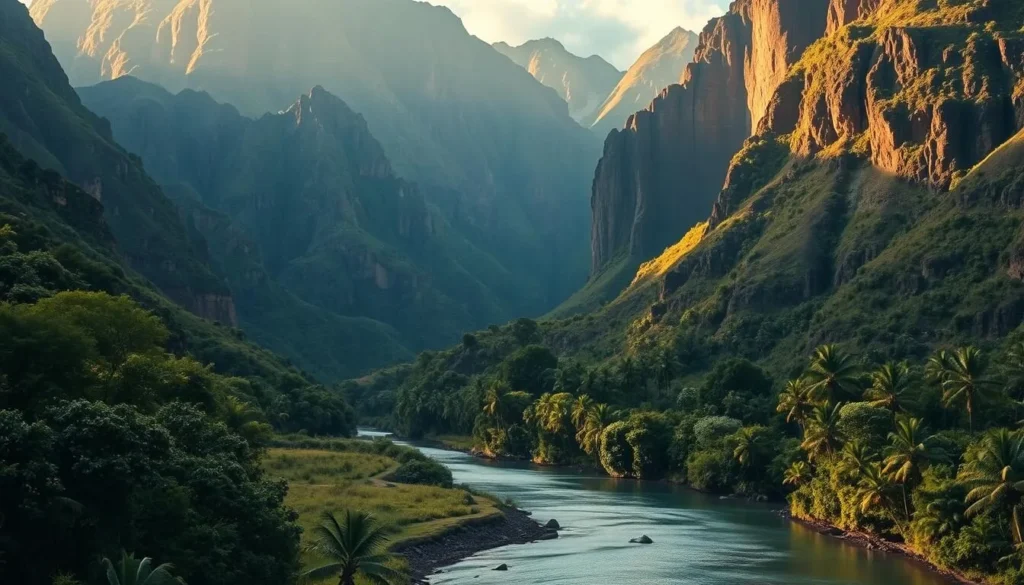
Understanding the history and significance of Īao Valley adds a meaningful dimension to your visit, connecting you with centuries of Hawaiian cultural practices and spiritual traditions on the island of Maui.
Essential Visitor Information
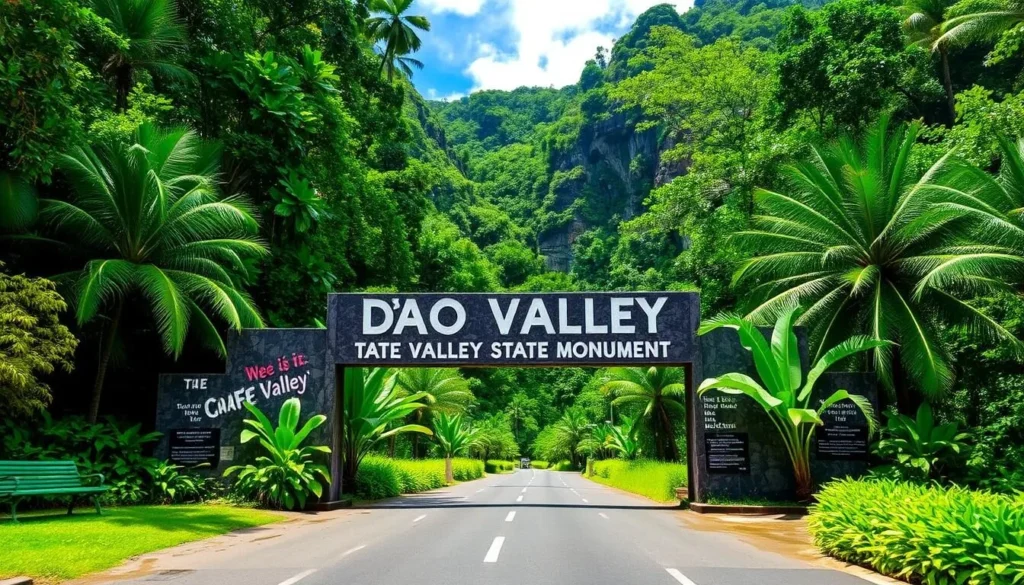
To ensure a smooth and enjoyable trip to Īao Valley State Monument, understanding the visitor information is crucial. This includes knowing the hours of operation, admission fees, and how to plan your visit.
Hours and Admission Fees
The monument is open daily from 7:00 AM to 7:00 PM. Admission fees are $5 per person for non-residents, while Hawaii residents with ID enjoy free admission. It’s essential to note that there’s a separate $10 parking fee per car for non-residents.
Reservation Requirements
Currently, reservations are not required for visiting Īao Valley State Monument. However, it’s always a good idea to check the official website or contact the park directly for any updates on reservation policies or special events that may affect your visit.
Directions and Parking
To get to Īao Valley State Monument, take Highway 32 from Kahului towards Wailuku. The road name changes to Main Street; continue until the fork and keep right to stay on ‘Iao Valley Road. The park is located at the end of ‘Iao Valley Road. Ample parking is available, but be aware that there’s a $10 parking fee per car for non-residents.
Having your own car is the most convenient way to reach the monument, although limited tour options may provide transportation for those without a vehicle. Make sure to budget for the parking fee and plan your route via valley road for a hassle-free visit.
Exploring the Trails and Activities
The trails within Īao Valley State Monument provide an immersive experience, connecting you with the natural beauty and history of the area. As you explore the monument, you’ll find several trails that cater to different interests and fitness levels.
Īao Needle Lookout Trail
The Īao Needle Lookout Trail is a must-visit, offering breathtaking views of the iconic Īao Needle. This trail is a short but steep hike that rewards you with a unique perspective on this natural wonder. As you walk, take in the rich cultural heritage associated with the needle.
Mala (Garden) Trail
The Mala Trail, also known as the Garden Trail, is a serene path that winds through a variety of native plants. This gentle trail is perfect for those looking to enjoy the tranquil beauty of the area’s flora. As you stroll, notice the diverse plant species that thrive in this Hawaiian environment.
Streamside Trail
After crossing the bridge, take the lower road to explore the kahawai or stream on the Streamside Trail, a short nature loop. Here, you’ll enjoy peaceful water views and lush vegetation alongside the Īao Stream. Key highlights include:
- Observing native plants in their natural habitat.
- Experiencing the soothing sounds of flowing water.
- Staying on designated paths to ensure your safety and protect the sensitive natural area.
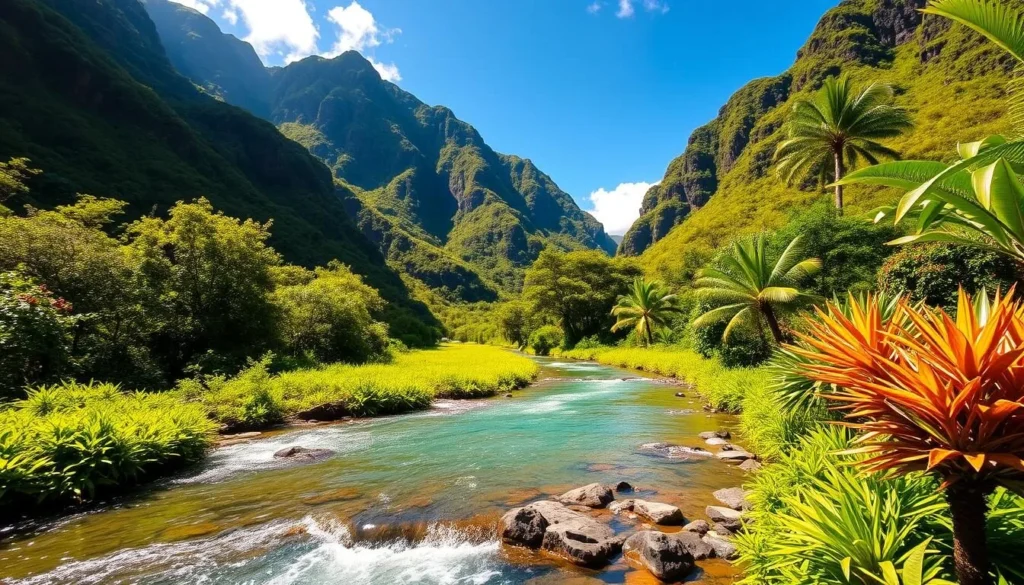
By exploring these trails, you’ll gain a deeper appreciation for the natural and cultural significance of Īao Valley State Monument. Each trail offers a unique perspective on the area’s beauty and history.
Weather and Best Time to Visit
Understanding the weather patterns is crucial for a memorable visit to Īao Valley State Monument. The unique geography of the valley can lead to varied weather conditions, making it essential to plan your visit at the right time.
Climate and Rainfall Patterns
The climate in Īao Valley is generally tropical, with significant rainfall throughout the year. The summer months tend to be drier, while the winter months experience more rainfall. Being aware of these patterns can help you prepare for your visit.
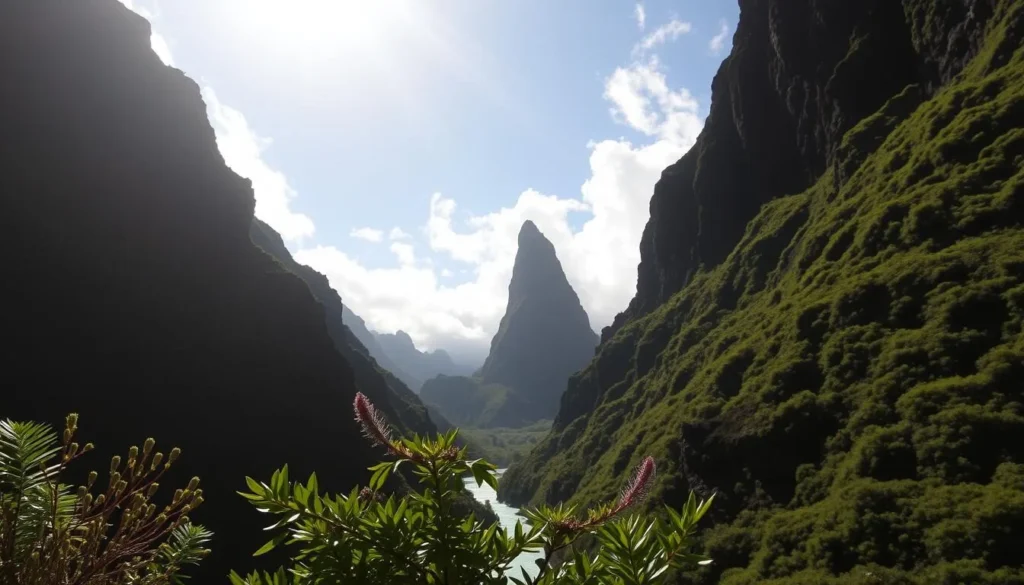
Optimal Visiting Hours and Seasons
For the best experience, consider visiting Īao Valley early in the morning, ideally before 9 a.m. This timing not only offers clearer views of the ‘Iao Needle before the afternoon clouds roll in but also helps you avoid the crowds that arrive later in the day. The summer months (May through September) generally provide more reliable weather for visitors, with fewer rainy days and better visibility from the lookout points.
- Arriving early in the morning provides clearer views and cooler temperatures.
- Summer months offer more reliable weather conditions, ideal for visiting the valley state monument.
- Checking the weather forecast before your visit can help you capture the best views and enjoy comfortable hiking conditions.
Planning Your Perfect Visit to Īao Valley
To make the most of your visit to Īao Valley State Monument, it’s essential to plan ahead and know what to expect. You can enhance your experience by combining it with nearby attractions in Central Maui, such as Wailuku Town’s shops and museums or the educational Kepaniwai Heritage Gardens.
When planning your itinerary, allow at least 2-3 hours to fully appreciate the valley’s beauty, history, and natural features. Consider bringing binoculars to spot native birds, a camera to capture the stunning views of the valley floor and Īao Needle, and water to stay hydrated during your explorations.
To respect the cultural significance of the area, stay on designated trails, refrain from removing any natural items, and approach this sacred place with the reverence it deserves. By following these tips, you can have a meaningful and enjoyable visit to Īao Valley State Monument.
The above is subject to change.
Check back often to TRAVEL.COM for the latest travel tips and deals.
